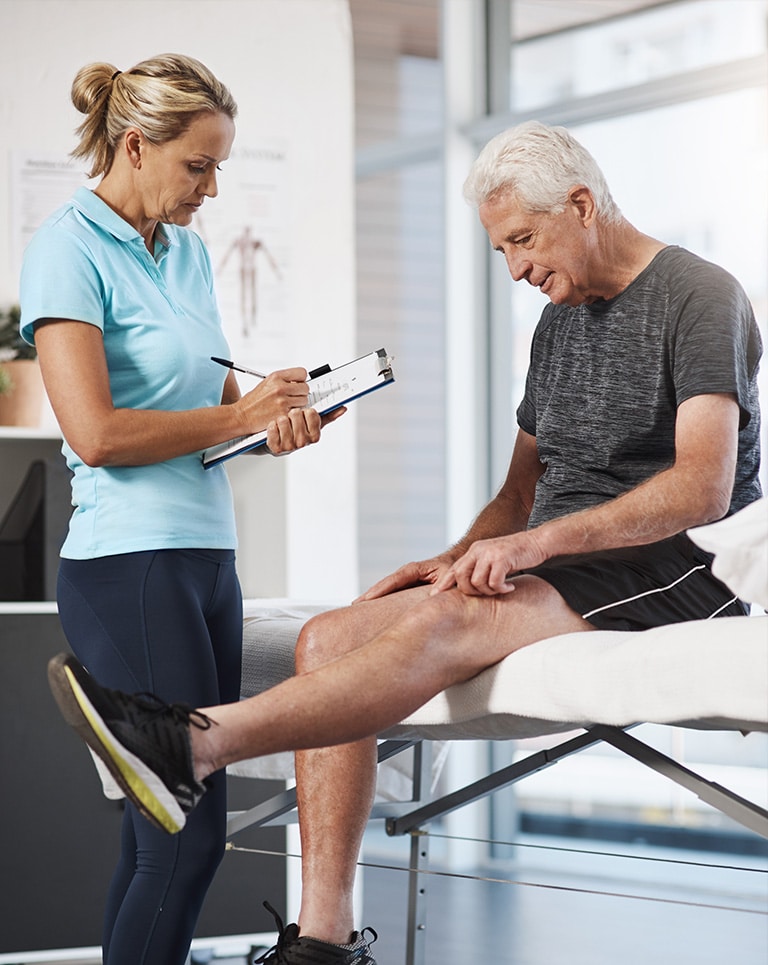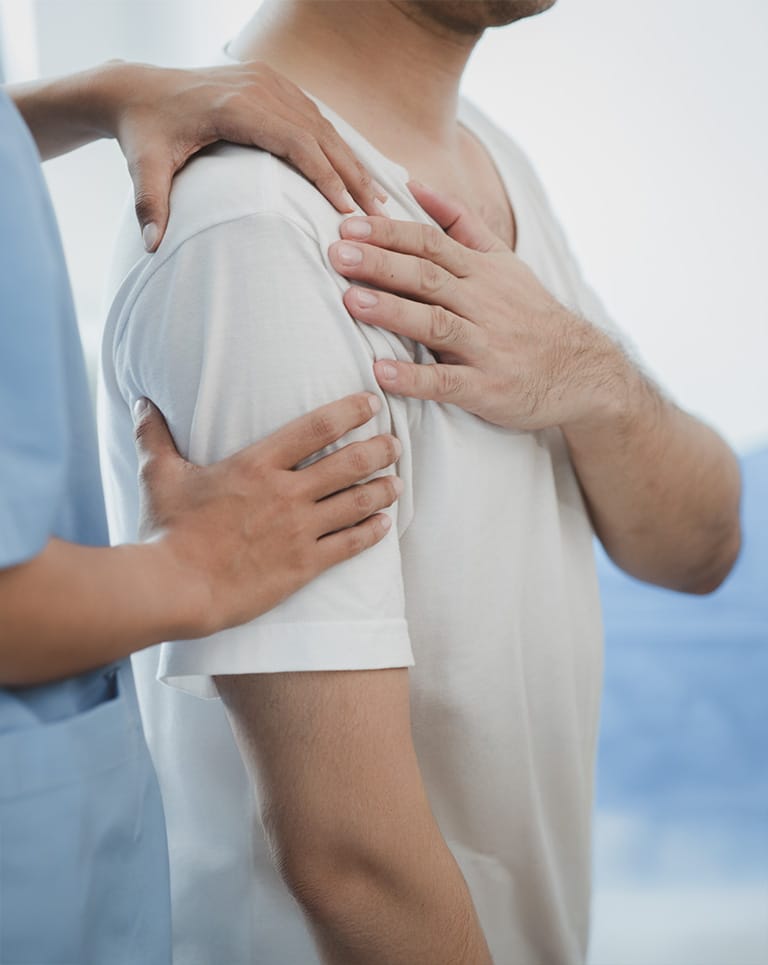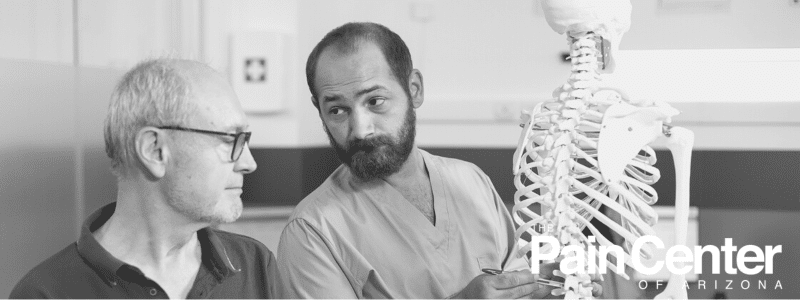
In this blog on spinal cord injuries, we’ll focus on rehabilitation, answering the following:
- How do you rehabilitate a spinal cord injury?
- What is the average rehab time for a spinal cord injury?
- What is the rehabilitation goal of spinal cord injury?
- What are the signs of spinal cord recovery?
- Do people fully recover from spinal cord injuries?
- TPC’s treatments for spinal cord injuries
How Do You Rehabilitate a Spinal Cord Injury?
Health professionals will typically recommend several options for a spinal cord injury. The goal of rehabilitation is to reduce pain, increase mobility, and help with any mental impact due to the injury. Some of the most common rehab methods include physical therapy, surgery, and support groups.
- Physical/Occupational Therapy. A spinal cord injury can significantly impact your range of motion and make it difficult to accomplish daily tasks. Pre or post-surgery PT is a great way to improve mobility, strengthen muscles, and increase independence.
- Surgery. A variety of minimally invasive surgeries are available to people dealing with chronic pain from a spinal cord injury. The Pain Center helps you figure out the best treatment for your pain. To name a few, we offer spinal cord stimulation, facet rhizotomy, and spinal decompression.
- Support Groups. Along with the physical effects of a spinal cord injury, it can also affect your mental health. Being a part of a support group can increase your confidence and help you overcome the psychological barriers of chronic pain.
What is the Average Rehab Time for a Spinal Cord Injury?
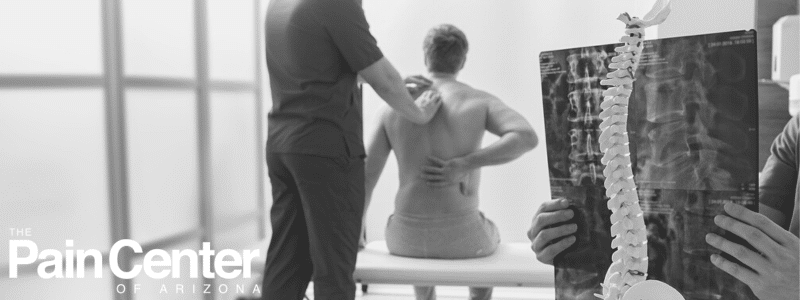
How long it’ll take for you to recover from a spinal cord injury depends on the severity of your condition, your medical history, and the type of care you’re receiving. For most, rehab will continue for many years. You and your healthcare professional or caretaker need to monitor the progress and report on any complications. While rehab may be recommended as a maintenance method, some people begin to recover body functions within 18 months after their injury occurs.
What is the Rehabilitation Goal of Spinal Cord Injury?
Spinal cord injury rehab aims to return your physical state to where it was before the injury. Although some injuries may leave permanent damage, rehab seeks to reduce pain, increase mobility, and improve any negative impacts on mental health due to loss of independence.
What are the Signs of Spinal Cord Recovery?
As you continue spinal cord recovery, you may begin to see the healing process. The signs of spinal cord recovery will usually include the following:
- Reduced swelling
- Reduced pain
- Regaining sensation
- Regaining movement and motor function
- Regaining reflexes (e.g., knee jerk)
- Regaining autonomic functions (e.g., blood pressure regulation)
- An increase in independence
- Improved coordination and balance
- Increased muscle tone and strength
- Improved sexual function
When you expect to see these improvements depends on your condition’s severity and the types of and extent of treatments you’re participating in. If you aren’t seeing signs of recovery, there may be alternative approaches to discuss with your doctor.
Do People Fully Recover from Spinal Cord Injuries?
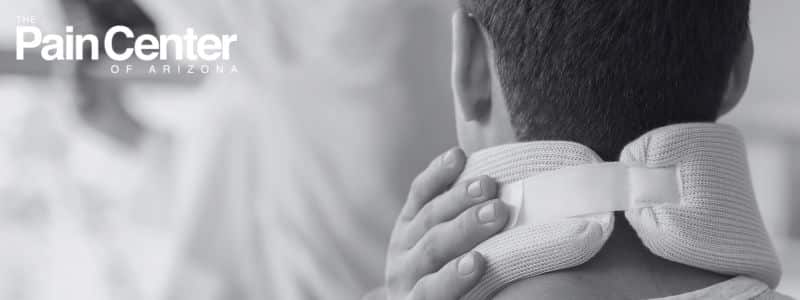
A spinal cord injury dramatically impacts your body. You will rarely see a full recovery from the condition. Taking part in treatments can allow you to regain some function. Treatments can aid in pain relief for those who suffer a complete spinal cord injury, but the condition will likely be permanent and cause lifelong complications with body function.
TPC’s Treatments for Spinal Cord Injuries
TPC Spine Stim
TPC Spine Stim is for patients with chronic back or leg pain who haven’t responded to alternative, conservative treatments in the past six months. The TPC Spine Stim works by implanting a nerve stimulation device into your spine. The device delivers low-voltage electrical currents to areas of the spine to reduce the pain signals causing chronic pain.
TPC Spine Fuse
TPC Spine Fuse targets spinal degeneration, usually brought on by stenosis, spondylolisthesis, and related conditions. It works to alleviate pain due to pressure on the spinal cord and instability that causes painful movements of the vertebrate.
In this procedure, a small incision goes into the back under live X-ray guidance. A device is placed between the spinous processes that fuse the segment. This gives the back stability, where the bones shift forward and backward. Our procedure can also be done through alternative approaches (a posterior, oblique, or lateral approach) depending on each individual’s needs.
TPC Spine Lift
TPC Spine Lift is a spinal decompression treatment to relieve spinal nerve pressure pain. This procedure is designed to aid patients suffering from chronic pain due to spinal stenosis and related conditions.
Our procedure uses the Vertiflex technique, lifting the space where the lumbar vertebrae are narrowing or bulging (often resulting from spinal stenosis). This process is done under a live X-ray as guidance, placing a small device that opens up the pressure area.
TPC Spine Decompress
TPC Spine Decompress offers a minimally invasive method of pain relief for patients with spinal stenosis. In this treatment procedure, a small trocar needle is used to locate where the narrowing is causing the pain is occurring. Following this, we use a small instrument called the rongeur to remove excessive bone or tissue to open the area.


